By Lucy Komisar
May 13, 2019 –
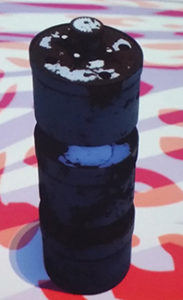
I pay attention to political art, but I was amazed at an exhibit at the new Whitney Biennial which not so subtly attacks the museum’s board of trustees vice chair as the owner of a company that builds weapons that target civilians!
“Triple Chaser.” The posted description said: “When US agents fired tear gas grenades at civilians along the San Diego-Tijuana border November 2018, photographs showed that the weapons were made by the Safariland Group, one of the world’s major manufacturers of co-called less-lethal munitions. The Safariland Group is owned by Warren B. Kanders. Kanders is a vice chair of the board of trustees of the Whitney Museum of American Art.”
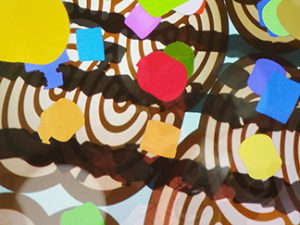
“Whereas the export of military equipment from the United States is a matter of public record, the sale and export of tear gas is not. As a result, it is only when images of tear gas canister appear online that the public an know where they have been sold and who is using them.”
The information goes on to explain that to find where they were used required scouring thousands of images and videos. That Forensic Architecture was training computer vision classifiers to detect Safariland’s tear gas munitions the Triple-Chaser. (Note the use of the word munitions.) It said the Triple-Chaser is named for the way it explodes into three pieces.
A video, with art, explains how the authors constructed a digital model and located it against patterned backgrounds. It would help them search for the real ones, so the next time Safariland munitions are used against civilians, we’ll know.
Models are at Safariland Forensic Architecture.
New, July 20 – Forensic Architecture says it has found bullet linking company of Whitney Vice Chair Warren Kanders to violence in Gaza, withdraws from Biennial. Read this.
July 25 – Kanders, whose company Safariland reportedly made tear-gas grenades used against migrants at US-Mexico border and elsewhere during protests, has resigned from the Whitney board. See this.
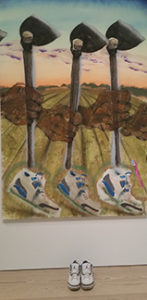
Does art now move into a new space, to activism, with the creator not an individual but a group?
A main issue of this Biennial is race, gender and equity.
“The Farm” by Pat Phillips, born in UK, lives in Pineville, LA, refers to the Louisiana State Penitentiary, about race, class, labor and a militarized culture. It moves from plantation slave labor to the labor of prisoners: this is Angola, the horrific Louisiana prison.
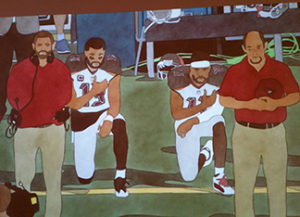
National Anthem 2018, a series by Kota Ezawa, born in Cologne, lives in Oakland, depicts NFL football players “taking a knee” during the “Star Spangled Banner” to point out that this was not the “land of the free.”
Procession, a very large sculpture on the outside terrace by Nicole Eisenman, born in France, lives in Brooklyn, is about the downtrodden and oppressed. It reminded me of Beckett‘s “Waiting for Godot.” The man who pulls a wagon with other subjugated figures would be the slave, Lucky.
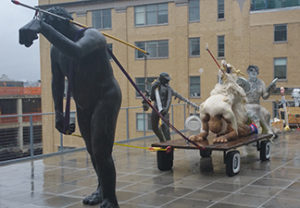
It’s important that the Whitney continues to give space to serious political criticism.
The Whitney Biennial runs from May 17 to September 22, 2019 at 99 Gansevoort Street, between Washington and West Streets. Closed Tues. Adults $25; students and over 65 $18; under 18 free. Fri 7 to 10pm pay what you wish. 5/14/19.
Photos by Lucy Komisar.

